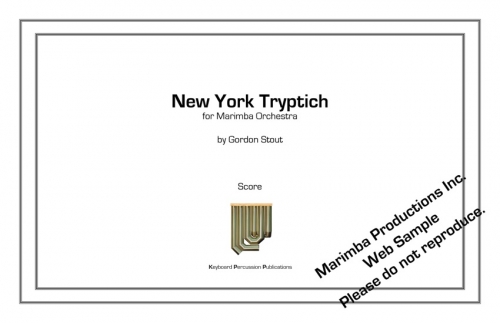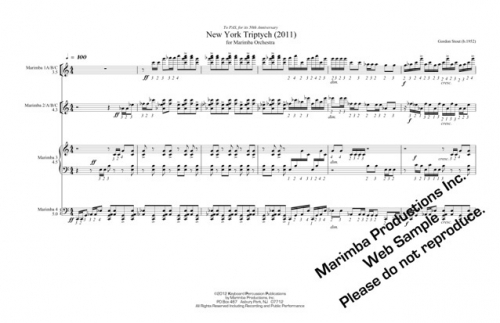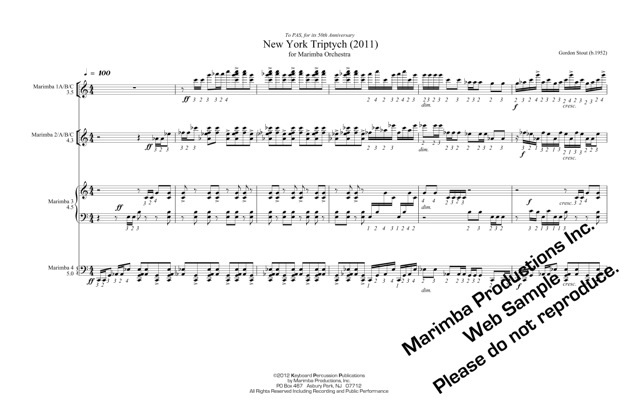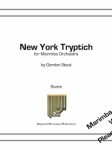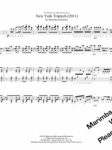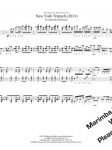The marimba 1 and 2 parts are split into three individual parts (divisi a 3). That way each marimba 1 and 2 player never plays but one note of the 3 note chord in certain passages. This keeps the parts easier for rehearsing in a short amount of time.
For eight marimbas:
Marimba 1A/B/C 3.5
Marimba 2 A/B/C 4.3
Marimba 3 4.5
Marimba 4 5.0
I had the privilege of writing about the quartet version of this composition in the September 2012 issue of Percussive Notes. Now available for marimba orchestra, a large amount of this work is still scored in four parts. However, at times, two of the voices are split into three separate lines. Moments in the quartet version that were blocked or rolled chords are now executed with each performer playing one or two notes.
One distinct difference between the two orchestrations is the inclusion of stickings. Necessary for the marimba orchestra due to the amount of performers on each part, these indications could also benefit those learning the quartet version. Conductors will appreciate the clarity of the large, spiral-bound score. Requiring a minimum of eight marimbas, this work would be a great selection for any collegiate ensemble that has enough instruments!
— Darin Olson, Percussive Notes — November 2012


